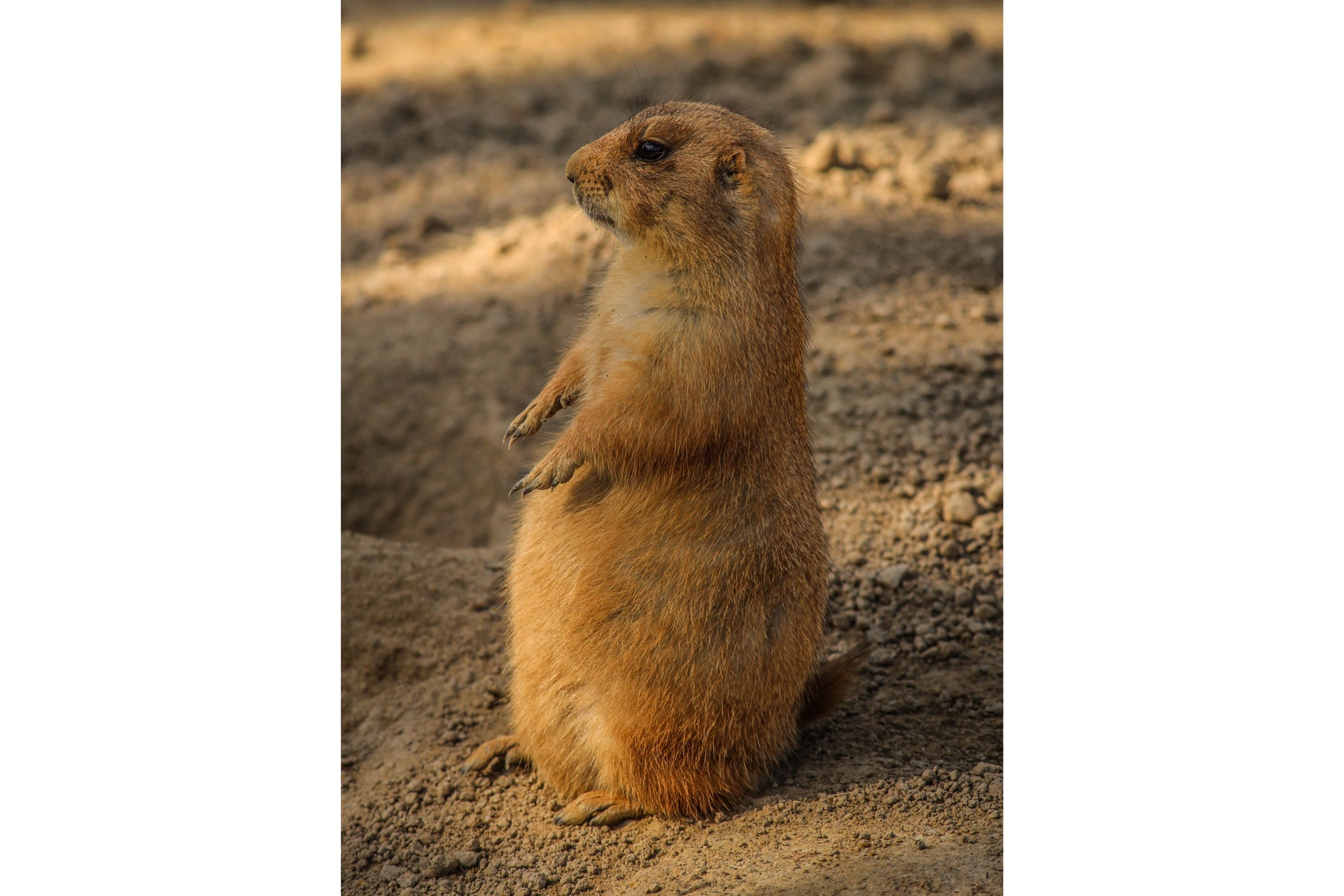Gunnison's prairie dog
(Cynomys gunnisoni)

Description
Gunnison's prairie dog (Cynomys gunnisoni) is one of five species of the prairie dog. This species belongs to the squirrel family of rodents, and are predominantly related to the North American and Eurasian ground squirrels. Gunnison's prairie dogs are primarily distributed in the Four Corners region of the United States. Gunnison's prairie dogs are 12 to 14 inches (30 to 37 centimeters) in length and have tails that measure 1.25 to 2.25 inches (3 to 6 centimeters). This species weighs from 1.5 to 2.5 lbs (0.5 to 1 kg). On average, males are larger in size than females. Gunnison's prairie dogs have 22 teeth, and five pairs of mammary glands. The Gunnison's prairie dog, C. gunnisoni, is the only prairie dog species that has 40 chromosomes. The other four species, black-tailed, white-tailed, Utah, and Mexican prairie dogs, have 50 chromosomes. Their coats are yellow-toned buff merged with black-colored hairs. The upper head, sides of the cheek, and eyebrows are distinctly darker than the rest of the body. Their tails are mostly white with grayish-white ends and the tips are light gray. The Gunnison's prairie dogs go through two yearly periodic moults during spring and fall. In spring, the shedding begins from the head to the rear tail. The process is reversed in the winter, it starts from the tail and proceeds to head. A distinguishing physical trait of the prairie dog is the placement of the eyes. They are situated on the sides of their heads, giving them a wide peripheral range of sight. This allows them to spot predators more easily and react as quickly as possible. Three-quarters of the population of Gunnison's prairie dogs are located in Arizona and New Mexico.They can be found in high desert, grasslands, meadows, hillsides, broad alluvial valleys and floodplains. They are often found in shrubs, such as rabbitbrush, sagebrush, and saltbrush. This species of prairie dogs resides in habitats ranging from 6,000-10,000 feet in altitude, although they have been recorded at altitudes as high as 12,000 feet. The sagebrush ecosystem is dependent on these animals. As a result of the Gunnison's prairie dogs burrowing, the soil is freshened, organic matter is added, and increased water penetration is able to occur. Their burrowing also creates habitats and exposes food sources for other creatures.
Taxonomic tree:







